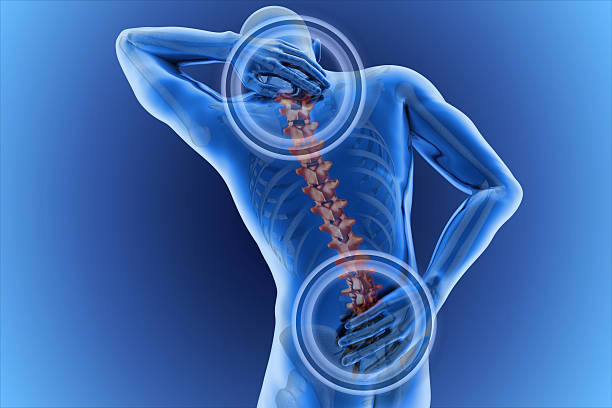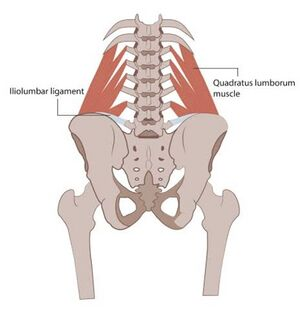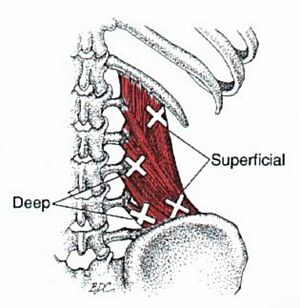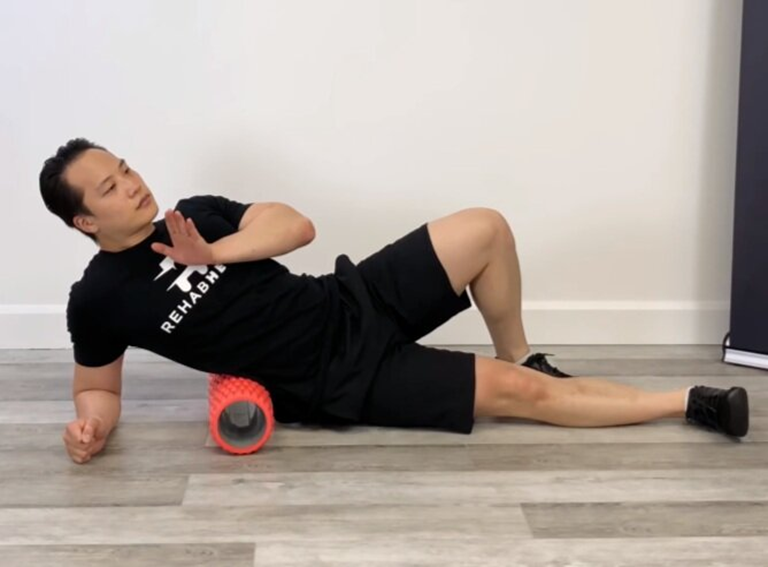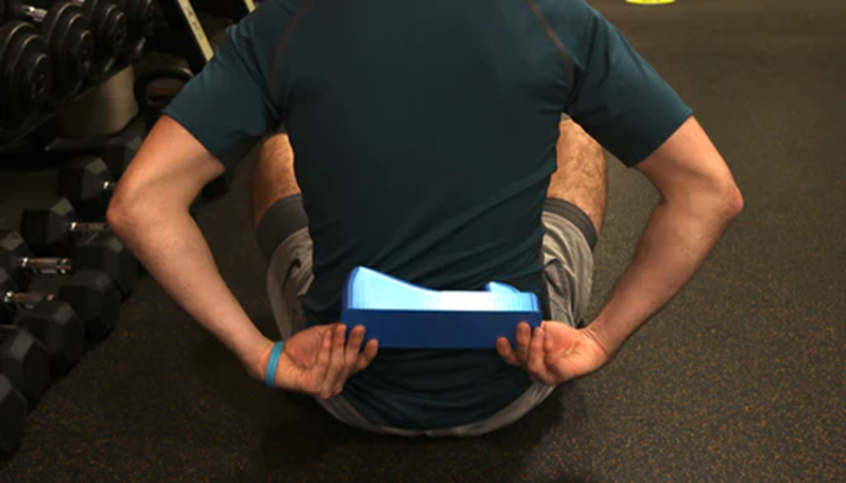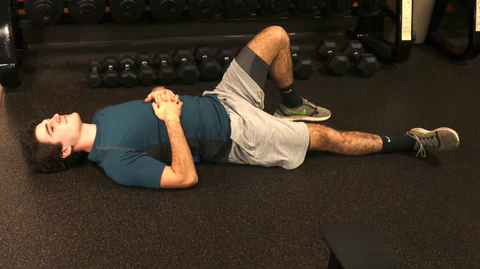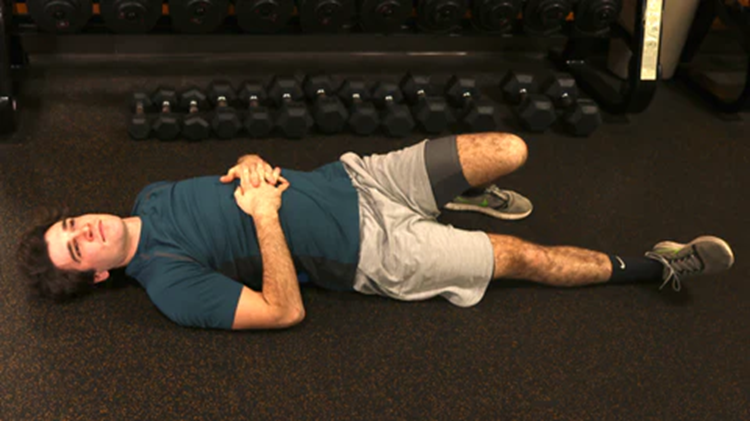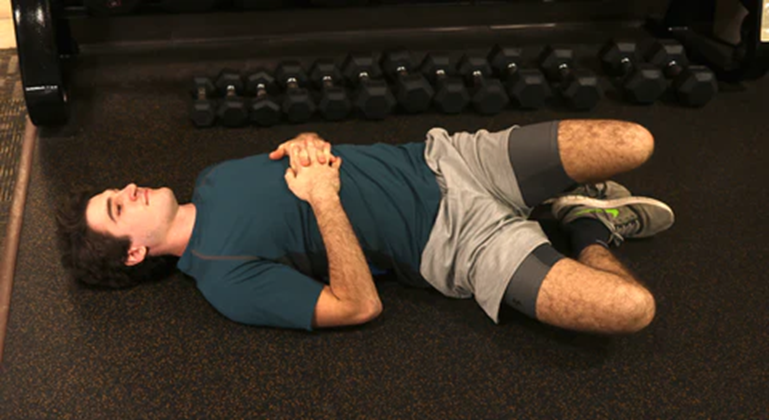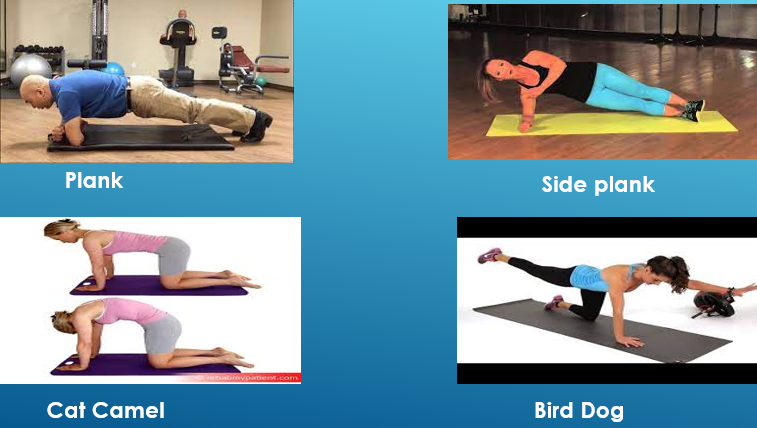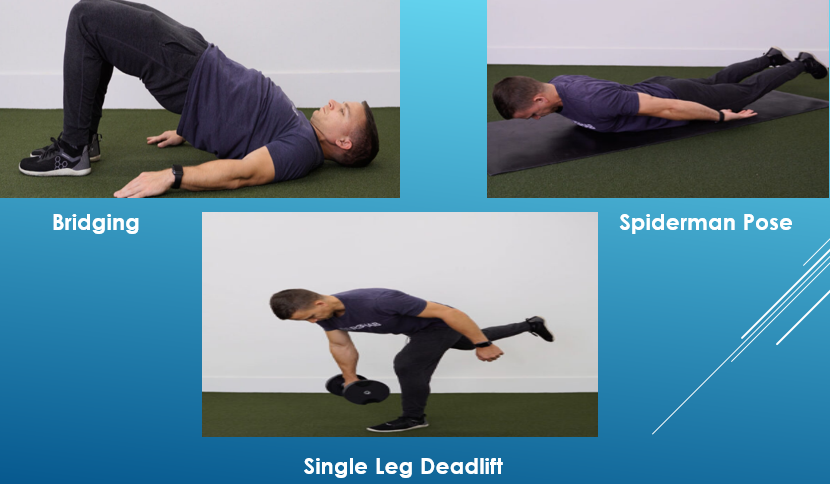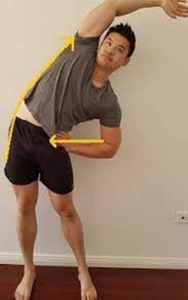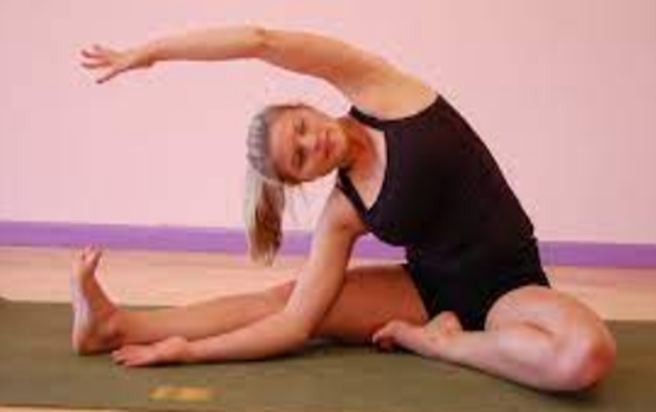The Quadratus Lumborum Syndrome is the deepest muscle of the lumbar region, extending from the pelvis to the last rib. It contracts during activities like sitting, walking, and standing, making it susceptible to pain. Pain is often caused by overuse but can also result from weakness and tension. Constantly standing in the same position reduces blood flow, contributing to pain. Weakness in the back extensor muscles can also exacerbate pain by placing additional strain on the Quadratus Lumborum.
Myofascial pain syndrome:
(MPS) of the spinal stabilizer muscles is one of the most frequent causes of chronic low back pain. However, MPS is often overlooked. Among the spinal stabilizer muscles, the quadratus lumborum (QL) is frequently a trigger point and location of referred lower back pain Overuse and strain of the QL is one of the major causes of chronic pain in the lower back.
MPS is characterized by symptoms that include localized muscular tenderness, myofascial trigger points, a palpable intramuscular taut band, and a muscular twitching response. MPS is a common cause of pain and dysfunction in the musculoskeletal system and accounts for 20% to 95% of cases with musculoskeletal pain presenting at outpatient clinics and pain management centers.
The primary goal of managing MPS is to break the vicious cycle of pain through the elimination of trigger points. There are various treatments for the elimination of myofascial trigger points, including trigger point injection (TPI), ischemic compression, stretching, massage, and treatment modalities, including ultrasound and transcutaneous electrical nerve stimulation. A variety of treatments exist, but the most effective treatment for MPS is still under debate.[2]It is characterized by pain and tension in the lumbar region.
The type and severity of pain can vary. Low back pain is often described as a deep ache, but it can also be felt as sharp and acute depending on the cause. Although the discomfort usually occurs at rest, it can get worse with movement. Lying, walking, standing, and rolling may aggravate the pain. Sharp pain may also be felt when sneezing or coughing. Quadratus lumborum pain can even interfere with daily activities such as walking and sitting.
Quadratus lumborum pain can become chronic. Long-term pain often impairs a person’s quality of life and well-being and also affects them physically. People with chronic low back pain are more likely to experience anxiety and depression than those without chronic pain.
Also, if one part of the body is causing pain, other parts try to support the painful area. For example, if the quadratus lumborum is tight and painful, we may find that the person begins to twist or change their gait by changing their body posture. This changing posture can place an additional load on other parts of the body, such as the hips, further increasing the pain.
Palpation of Quadratus Lumborum Syndrome:
Place of palpation:
Inner lip of iliac bone on the paraspinal part.
Hypersensitivity in this area indicates that the muscle is under tension. Iliopsoas and Quadratus lumborum both fuse together on the inner lip of the iliac crest so the increase in tension will be on both the muscles.
Trigger Points:
A trigger point is a sensitive area of muscle or connective tissue that hurts when stimulated or pressed. Trigger points are also often described as small knots. Pressing a trigger point can also cause directed or radiating pain. Radiating pain is the discomfort felt more in a different part of the body when the sensitive point is pressed. Quadratus lumborum trigger points can cause pain in the lower back, pelvis, and hips. Quadratus lumborum trigger points can cause deep pain in the lower back or a stabbing sensation in the hips or pelvis. It can also cause sharp pain when the QL shortens when coughing or sneezing.
Causes
- Poor posture
- Occupational stresses such as prolonged sitting or standing at the workplace or continuous lifting activities.
- Sedentary lifestyle
- Obesity
- Muscle spasm (quadratus lumborum)
- Pregnancy
Physiotherapy treatment:
In the condition of chronic low back pain, the quadratus lumborum is under tension and presents with trigger points. Manual trigger point therapy is effective and provides relief from trigger points. Dry needling is another form of treatment that provides instant relief in trigger point pain and in turn reduces the tension and sensitivity of the hyperactive muscle. The few commonly used modalities for this condition are heating pads, TENS, and ultrasound. It helps in reducing the pain and irritability. Stretching of the quadratus lumborum is also effective in patients with nonspecific low back pain. The patient can continue self-massage at home.
Myofascial Release:
Using a foam roller can be a great way to release tight QL muscles in the lower back. The right foam roller can target and treat these muscles to relieve symptoms. Foam rolling can help improve circulation, provide myofascial release, reduce trigger points, and allow for better mobility helping you move freely.
QL CLAW MASSAGE TOOL:
Place the Claw perpendicular to your spine, between the top of your pelvis and the lowest rib. To locate the QL muscle, lay supine (on your back) on the floor and hike one hip up towards the ribcage. The muscle that just did work is the Quadratus Lumborum.
LEVEL 1:
LEVEL 2:
LEVEL 3:
Strengthening Exercises:
Stretching Exercises:
Side bend stretch:
- Stand with your feet shoulder-width apart.
- Place your right hand on your right hip and your left hand on the top of your head.
- Slowly bend to the right side, feeling a stretch in the left side of your lower back.
- Hold the stretch for 30 seconds, then repeat on the other side.
Standing twist stretch:
- Stand with your feet shoulder-width apart.
- Place your right hand on your right hip and your left hand on the back of your head.
- Slowly twist your upper body to the right, feeling a stretch in the left side of your lower back.
- Hold the stretch for 30 seconds, then repeat on the other side.
Seated twist stretch:
- Sit on the ground with your legs straight out in front of you.
- Cross your left leg over your right leg and place your left foot on the ground next to your right knee.
- Place your right hand on the ground behind you.
- Slowly twist your upper body to the left, feeling a stretch in the right side of your lower back.
- Hold the stretch for 30 seconds, then repeat on the other side.

